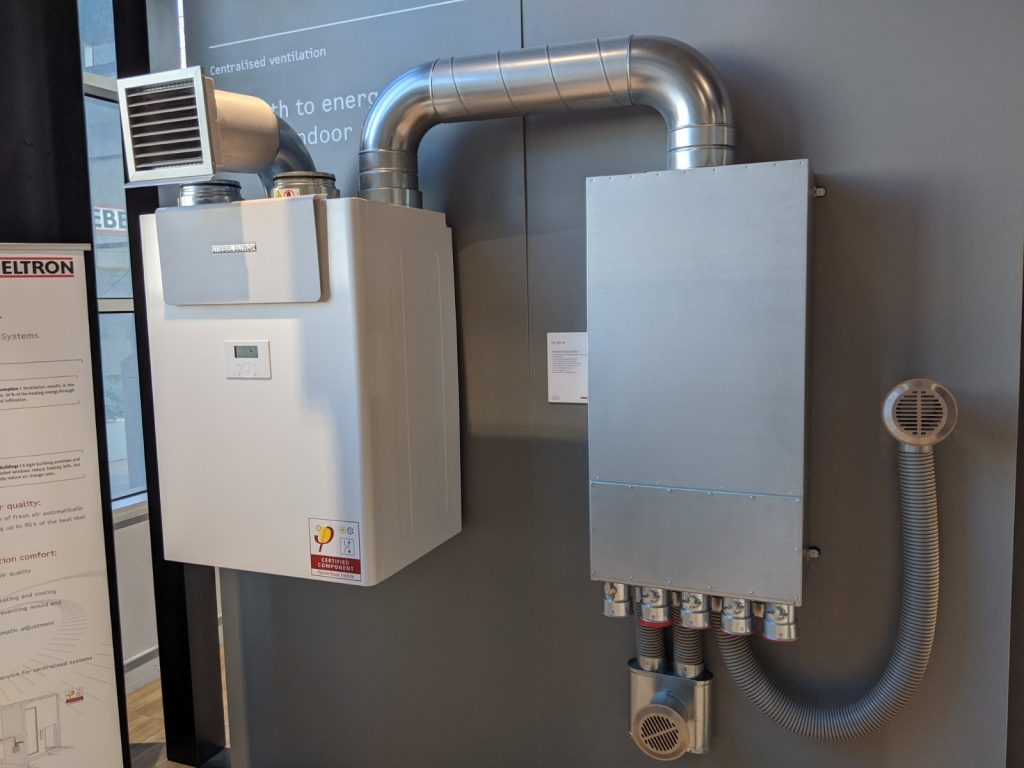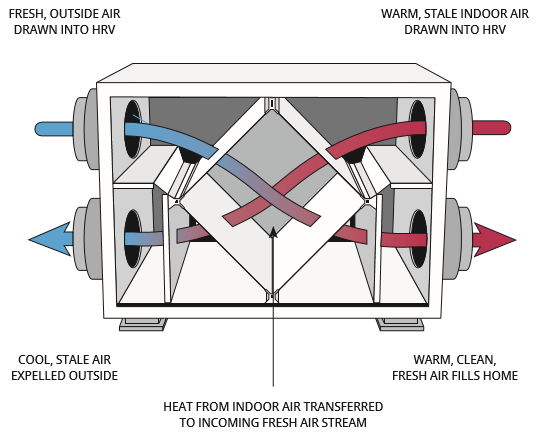HRV vs Other Ventilation Systems: What Homeowners Should Know
Exploring the Benefits of Heat Recovery Ventilation for Power Efficiency in Residences
Heat Recovery Ventilation (HRV) systems use home owners a sensible method to enhancing power performance. By redeeming heat from outward bound air, these systems can considerably lower heating & cooling prices. Furthermore, they provide a stable supply of fresh air, enhancing interior air top quality and comfort levels. As homeowners think about lasting options, recognizing the nuances of HRV systems becomes significantly vital. What elements should one evaluate before making such an investment?
Understanding Heat Recovery Ventilation Equipments

How HRV Boosts Indoor Air Quality

Power Financial Savings: The Monetary Advantages of HRV
Making best use of power efficiency, heat recovery ventilation (HRV) systems supply substantial monetary benefits for property owners. By recouping and reusing warmth from exhaust air, HRVs markedly decrease cooling and heating expenses. This modern technology can lead to energy financial savings of approximately 30%, depending on environment and usage patterns. Home owners often discover reduced utility bills soon after installment, making HRVs a financially smart investment over time. In addition, many regions give incentives or refunds for energy-efficient upgrades, better improving the financial allure. As energy costs proceed to rise, the cost-effectiveness of HRVs ends up being significantly clear. In general, the consolidation of HRV systems not just advertises energy effectiveness however additionally adds to long-term economic cost savings for families.
The Environmental Impact of Heat Recovery Ventilation
A considerable ecological benefit of heat recovery ventilation (HRV) systems hinges on their ability to decrease overall power intake. company website By reclaiming heat from exhaust air and transferring it to inbound fresh air, HRV systems lessen the demand for energy-intensive heating and cooling down methods. This reduction in energy need adds to decrease greenhouse gas emissions, as much less nonrenewable fuel source is called for to maintain comfy interior temperature levels. In addition, HRV systems boost interior air high quality by effectively exchanging stagnant air with fresh outside air, lowering dependence on mechanical air conditioning systems that can damage the environment. On the whole, the implementation of HRV systems supports lasting living methods and aligns with worldwide efforts to fight climate modification by advertising energy efficiency in residential settings.
Picking the Right HRV System for Your Home
Just how can home owners ensure they pick the appropriate heat recovery ventilation (HRV) system for their requirements? They should analyze their home's dimension and design, as these factors influence air flow demands. Next off, assessing the system's efficiency scores is vital, as higher scores show much better efficiency and power savings. Home owners ought to likewise take into consideration installation and upkeep prices, comparing different brands and versions for worth. In addition, it is necessary to evaluate noise levels, as some systems operate more silently than others. Consulting with cooling and heating experts can provide customized referrals based on certain home conditions. Lastly, taking a look at user reviews and warranties can aid in making an informed decision, ensuring that the chosen HRV system effectively enhances indoor air quality and power performance.
Frequently Asked Concerns

Just how Commonly Should I Tidy or Keep My HRV System?
The regularity of cleaning or keeping a warm recovery ventilation (HRV) system typically depends upon usage and ecological variables. Normally, it is suggested to execute maintenance every six months to guarantee peak performance and air top quality.

Can HRV Equipments Help In Reducing Moisture Degrees Indoors?
HRV systems can efficiently decrease interior humidity degrees by trading stagnant, damp air with fresh, drier air from outside. HRV check here Heat Recovery Ventilation. This process helps keep a balanced indoor environment, boosting convenience and stopping moisture-related issues
What Is the Life-span of a Typical HRV System?
The lifespan of a common heat recovery ventilation (HRV) system differs, normally lasting between 10 to 15 years. Routine maintenance can extend its performance and functional life, making certain peak performance throughout its usage duration.
Exist Any Kind Of Noise Concerns With HRV Equipments?
Sound interest in HRV systems can occur, particularly from fan operation. Nonetheless, see many contemporary systems are made to decrease audio levels, guaranteeing they operate silently while keeping effectiveness, which resolves prospective disturbances in living atmospheres.
Can I Install an HRV System Myself, or Do I Need a Professional?
The individual contemplated whether to install the heat recovery ventilation (HRV) system directly or employ a professional. Normally, while do it yourself installation is possible, expertise warranties appropriate functionality and conformity with neighborhood building ordinance, enhancing system effectiveness.